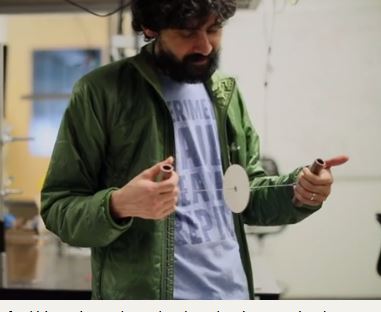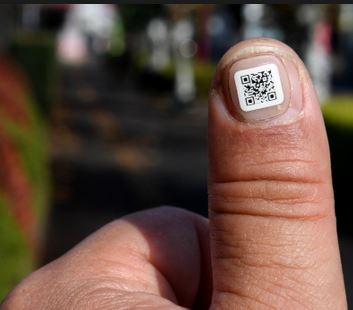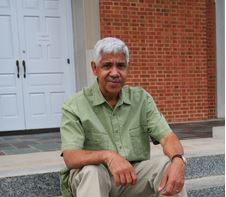Recently recognized as a Dementia Capable Society Leader by Dementia Care Specialists, Florida-based senior living provider The Arbor Company has announced the introduction of its Bridges memory care program at the company’s Barrington Terrace senior living community in Fort Myers. The Arbor Company began expanding its dementia care services last year with specialized training for its care providers via webinars and in-person classroom instruction. Decrying the standard, “one-size-fits-all” approach to most memory care issues, the company’s Bridges program is meant to provide a more tailored solution. The program’s three “neighborhoods” cover the range of memory care needs, from assisted living to early stage dementia, with customized 24-hour support. At the assisted living level, residents receive minimal to comprehensive care based on their needs and lifestyles and designed to grow as those needs change. At the Bridges level, a “high-sensory, purposeful environment” groups residents based on similar stages of memory loss for less isolation and a more comfortable living environment. At the final stage, the Evergreen neighborhood includes 24-hour support and care based on “the latest dementia research.” “The services and programs Barrington Terrace offers its residents are beyond compare,” Laura Ellen Christian, The Arbor Company’s Vice President of Engagement and Training said in a statement. “We are excited to introduce the Bridges concept to Fort Myers and to the families who will benefit from our unique philosophy of memory care.” In addition to individualized care programs based on a resident’s specific needs, the Bridges program also provides counseling and support for family members. With the goal of making memory care affordable and effective, the Bridges program at Barrington Terrace gives residents access to the latest in dementia care in a warm, inviting environment. “Our new neighborhoods at Barrington Terrace make an immediate impact upon families who...
Low-Tech Diagnostics
Frugal Science
For caregivers in economically depressed communities, even the simplest tests can be too expensive. But thanks to the Paperfuge, spinning biological samples for testing just got a whole lot more economical. The Paperfuge allows health care workers to perform important diagnostic tests in just a few minutes, all for less than a twenty-five cents. Understanding the need to provide low-cost, and low-tech, testing and diagnosis options to the developing world, Stanford Bioengineer Manu Prakash alighted on the idea of modifying a children’s toy into a cheap, functional centrifuge. It’s all a part of Prakash’s commitment to improving healthcare across the globe by pursuing the art of Frugal Science. “To me, Frugal Science is really designing with constraints in mind,” says Prakash in a video about the Paperfuge. “When we say ‘bringing tools the masses,’ we truly do mean the billions of people on the planet.” Low Energy, High Results Traditional centrifuges are bulky, expensive and require a robust energy supply, making them almost impossible to operate in far-flung reaches of the world. A StatSpin MP centrifuge, for example, can cost thousands of dollars and runs on electricity. For many economically challenged communities, standard medical equipment is too costly and resource intensive. Prakash and his team took on the challenge of making a more accessible – and affordable – version of this valuable diagnostic tool. “We told ourselves, we can design one, but it cannot require any electricity, and it needs to be light and portable – I need to be able to carry it in my pocket – and it needs to cost less than a dollar in parts.,” explains Prakash in the video. “By boxing ourselves in with constraints, we were able to think outside the box.” The Paperfuge fits all of those...
Dementia Tags
Dementia Care
As a dementia crisis looms, one Japanese city has ditched GPS locators and other wearable devices in favor of low-tech stickers for tracking elderly patients. While dementia locators have been around for a couple of years, a new system developed in Japan aims to fix some of the issues inherent t wearable tracking devices. Ditching pendants and pocket GPS trackers, a company in Iruma, Japan has developed a QR-code tagging system for dementia patients. Beyond the ID Tag Typical medical ID bracelets and patient wristbands still serve an important function, but anything wearable can be damaged or lost. Because dementia patients are often incapable of supplying basic information about their identity, the ability to affix a permanent identifier has become increasingly important. While microchips may seem like an obvious solution, without the tools to read an implanted device any subcutaneous identifier has limited utility. Similarly, GPS trackers must often be within range of satellite or mobile service to be useful. As a result, there’s a growing need for a practical, low-cost and easily managed solution. The one-centimeter QR stickers recently deployed in Iruma are water resistant and designed to last up to two weeks. They can be affixed to a fingernail or toenail, and can be read by any free QR code mobile app. The code itself includes a unique identifier, along with the name, telephone number and address of the patient. The service, which is free, was just launched in November of this year to positive response. “There are already ID stickers for clothes or shoes, but dementia patients are not always wearing those items,” a Japanese official explained to AFP news. “Being able to attach the seals on nails is a great advantage.” A Crisis Point The World Health Organization estimates some 36...
No More Falls
Senior Safety Technology
For many senior citizens, the choice to move into assisted living begins the moment staying at home becomes dangerous. Tripping over carpet or a tumbling down a flight of stairs can no longer be dispatched with an ice pack or a trip to urgent care. For adults 65 and older, these incidents often result in broken bones, head injuries or even death. But what if a fall could be predicted and prevented? That’s the hope behind a new sensor system developed by the Sinclair School of Nursing and the College of Engineering at the University of Missouri. Through a combination of onsite monitoring and data analysis, the sensors record the gait and speed of residents. That information can then be used to forecast when a fall might be imminent helping care providers take action before calamity. “Assessment of these functions through the use of sensor technology is improving coordinated health care for older adults,” Marjorie Skubic, director of the MU Center for Eldercare and Rehabilitation Technology, tells Engineering.com in a recent interview about the sensor system. Watchers on the Wall The sensor project is part of ongoing research currently underway at TigerPlace, a Missouri retirement community that promotes “aging-in-place.” Part of a collaboration between Americare Corporation and the University of Missouri, TigerPlace’s main objective is to “maximize the independence of residents while supporting research.” The facility has been using the sensors as part of ongoing research to study how early detection of “changes in function” can be used to target health problems before they become critical. As part of that process, the project’s In-home Monitoring System (IMS). IMS wirelessly records and shares motion data and images collected by sensors placed throughout the home. If significant changes in activity are detected, the system can send...




